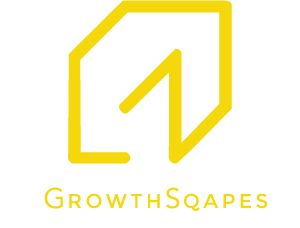Irrespective of whether you are working in a high-demand, sunrise industry where your products and services are novel or a matured and niche industry where your products and services are highly differentiated, the importance of getting the right sales leads can never be ignored.
According to Marketing Sherpa, 61% of B2B marketers send all their leads to sales, but only 27% are qualified. As a result, sales reps ignore an amazing 50% of the marketing leads they are handed over! We have heard of the saying “Garbage In, garbage out”. In lead management, if garbage goes into the funnel, nothing will come out.
Create an ideal customer profile: Besides demographics and psychographics/ lifestyle parameters, alignment of the prospect with potential needs that will be best addressed by the products and solutions and value proposition are criteria that help to judge the strength of a lead that would be a good fit. For B2B customers, commonly used parameters include the size and turnover of the company, its future growth plans, profitability, market positioning, technology, ESG etc.
Decide on the Lead Qualification Criteria: To make this exercise objective, it helps to have a checklist of the parameters with a simple scoring system to evaluate the strength of fit. If the fit is good, the chances of the lead turning into a qualified prospect and sale increases manifold.
Define buying personas: Depending on the nature of products/ services, instead of a common Buyer profile, you may have to draw up different buyer personas e.g., a high-end 3BHK apartment valued at 5 Cr., may be positioned either to a wealthy dual-income-no-kids family or an empty-nest couple. Their needs and consequently the buyer profiles and priorities are totally different and naturally the content, cadence and channels of marketing communication and sales pitch need to be different.
Different Buyer persona can also be drawn up in terms of organisation profile, industry, application, GTM channels or even Buyer Journey maps. The entire set of marketing collaterals, engagement tools and sales pitch can be customised for each Buyer persona to get the best results. Organization specific sales training programmes should focus on defining buyer personas.
Define the buyer actions for qualifying a lead. In addition to scoring leads by their profile and fit with the ideal customer profile, we should have a set of criteria and scoring rule based on their level of interest and engagement whether it is through email/ SMS response, social media, website, Events / Webinars.
Decide on the threshold Lead Qualification Score: The combination of scores from the Lead Qualification criteria for Customer profile and Buyer actions will yield a composite Lead Qualification score which may be used to decide on the threshold level for passing the leads to the Inside Sales /SDR team or Sales team
A point to remember is that marketing and sales team are both active stakeholders in this game. It is important to get both on the same page and agree to the lead qualification criteria to enable marketing to focus their efforts to generate leads that sales will accept give sales the confidence to invest their time and effort to convert the leads that come their way. Quarterly meetings are recommended to check the results of pipeline metrics and do course corrections, as required in finetuning the Buyer profile, scoring rules, buyer behaviour / journey maps and marketing efforts
A company which has seen reasonable success in the business for a few years have another important datapoint for doing the above. Instead of reinventing the wheel, it can look at the existing client profile and with some data analytics prepare the buyer personae, their journey maps, the number, frequency, and nature of touchpoints that worked, the time between touches and so on and so forth. In fact, it can be used to prepare Customer Success stories for each buyer persona which can be weaved into marketing communication or even as a story-telling spiel during sales conversations. Sales capability lies in learning from previous successes.
Ascertain the buying stage: While Marketing goes about reaching out and engaging the target population, it would be important to remember that all prospects or potential buyers are not in the same buying stage. While some buyers are becoming aware and gathering information, others would be in the evaluation or consideration stage and some others would be in the decision-making stage. Knowing the buying stage in advance helps the salesperson to engage with the prospect in a meaningful dialogue.
Some marketing actions like triggering the appropriate content for email or social media message or Event invite to be sent to a lead can be automated and linked to the CRM system for operational efficiency. Having a defined buyer journey mapped to the buyer persona can automate this process
Decide on the next steps: When the composite lead qualification score for the MQL is more than the threshold, it would trigger a call request for the salesperson to start engaging actively with the prospect. If the score is below the threshold, it would go to the bucket for lead nurturing. The low scoring leads will be kept aside in the database to be used for engaging may be once or twice in a year
While most Inside sales / prospecting teams are tasked with qualifying the MQL and identifying the SQL, typical BANT (Budget, Authority, Need, Timeline) questions may not be enough to weed out those who are exploring or do not feel the pain to look for a solution actively. Three additional questions a) to confirm the intensity of the need b) Alignment to product/ solution and c) intent to move forward are needed to make it SQL
Any sales capability development initiative should focus on helping the sales reps, here is a simple, seven-step process which would help you focus on the leads that are worth pursuing by spending time in sales conversations with a higher probability of closure:
All of the above contribute to both individual and organizational sales capability building. However, there could be some challenges while following the above steps that can derail the best Lead Qualification process even if you have a CRM that supports all of the above:
Not having a dedicated person to monitor the Lead Management process. Sometimes, it is clubbed under Marketing or under Sales. It is important to appreciate that this is an interface role and hence needs an independent focus
Lead handover to sales is a joint responsibility of Inside Sales and Sales which means that in the first meeting of the prospect with sales, the Inside Sales team member should ideally do the introductions, recap the earlier discussions, especially the questions or objections that the prospect has raised and the needs and interests that he has articulated. Once this alignment is done, it is for Sales to convert the prospect
Lack of relevant skills of the Inside Sales team to build rapport quickly, ask the relevant questions in a consultative style and position self, organisation, and the solutions appropriately. This is especially true for Outbound calls which are perceived as “cold calls” simply because the caller fails to generate interest and engage the prospect
Not using multiple touchpoints could also lead to unresponsive leads or even leads that disengage and block incoming SMS or cold calls. An omnichannel strategy is found to work best. Increasingly prospects are moving to digital and self-help channels for specialised services like alternative investment options for wealth management and some companies are investing heavily to create this new buyer journey experience.
Involvement of top leadership in measuring and reviewing the result of the lead management process is critical to the success of sales. For complex or niche products/ services this step in the sales process is the most critical as it can change the cost of the sales equation drastically if there are minor errors.
This blog has been written by Sandip Mitra, Associate Partner at GrowthSqapes.

